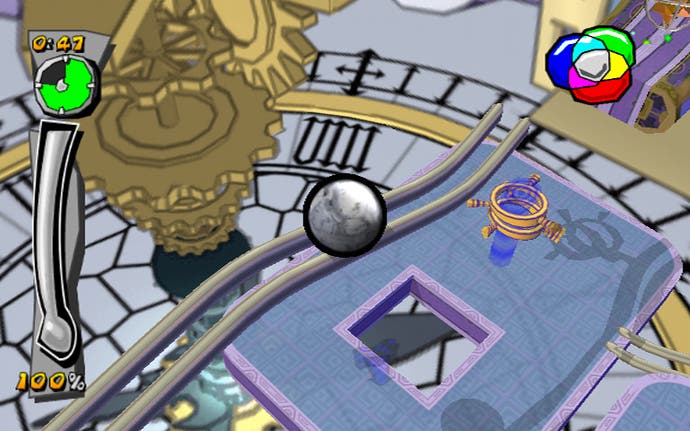Mercury Meltdown Revolution
Revelation, more like.
As everyone who's reading this sentence for the second time knows, Mercury was originally designed to work with a PSP motion sensor that never made it into production, so Mercury Meltdown Revolution is a very logical release. Other developers have had to sit around making up reasons for you to flap your arms; Ignition Banbury already had one, and a very good one, too. Critically acclaimed on the PSP even without the sensor, the second game won itself 9/10 just a few short months ago, as we reasoned that while it may be good at raising your temperature, it's still a timeless example of how to pit player against environment. Can it repeat the trick on the console that might as well be its home?
Some early Wii titles have taken as much as an hour to explain their controls, but Mercury is so simple that the optional tutorial can afford to spend most of its time talking about other things. You hold the Wiimote in both hands like a traditional game controller with the buttons facing upward, and as you tilt it the ground beneath the blob of silvery mercury on-screen follows suit. A tiny dead-zone in the centre ensures that accidental twitches don't send the mercury flying off-course, and outside of that dead-zone the reaction is perfectly judged. The only things that take getting used to are rotating the camera 90 degrees left and right with the d-pad, using A and B to zoom in and out, and reaching for the minus button to bring up the free-look mode, which allows you to examine the level design at your leisure and decide on the best route to the goal. Beyond that, the consistency of the physics and the game's reaction to your input put you firm control, resulting in one of the most intuitive Wii games you'll ever play. The developers have chosen not to restrict players to using the Wiimote either, offering the Classic Controller's analogue stick as an alternative. It's a testament to the developer's mastery of the Wii hardware that neither offers a big advantage over the other.

The Wii version also introduces several new levels, and changes the order in which you encounter some of the existing ones to help smooth out the difficulty curve. In many respects though it's the same game that we liked so much on PSP, and that's no bad thing. Full of charm and enterprise, each of the game's more-than 150 levels asks you to navigate narrow platforms, throw switches to open gates, and eventually make your way to a chequered square at the end. Bonuses like unlockable mini-games are offered to players who can collect all of a level's stars, get to the end with 100% of the blob intact, or make it through with time still on the clock. The game won't penalise you if run into trouble, either. Large numbers of levels are unlocked at once, and you don't need to finish all of them to reach the later stages. Nor do you need to start again if the time runs out; the only thing that kills you is falling off the level into the abyss, or having all of your mercury zapped away in one of the level's traps.


